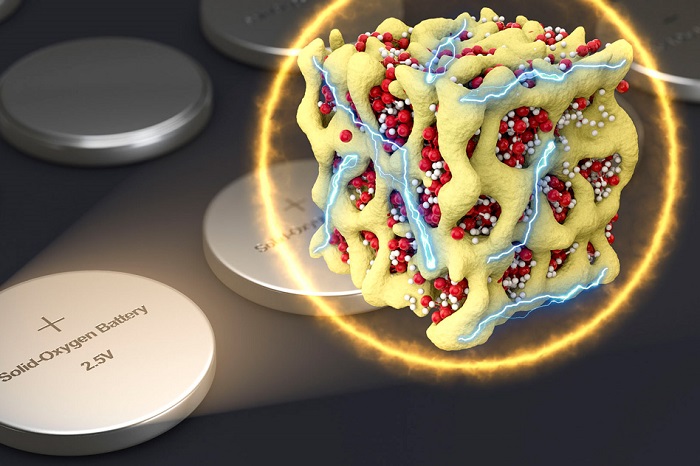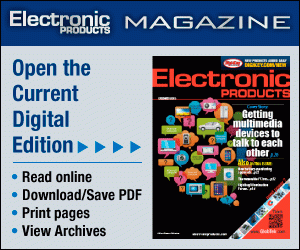For the past few years, companies and research groups have poured considerable resources into exploration of lithium-oxygen battery technology. The reason being it is seen as one of the more highly promising portable power resources to come along in a long time, what with its high energy output related to its considerably low weight.
But there have been numerous hurdles in the way of it reaching actual scalability. For one, lithium-air batteries waste a lot of energy in the form of heat; to this end, they tend to degrade at a faster rate too. They also require extra (and expensive) components to pump oxygen in / out in an open cell configuration – one that is extremely different from conventionally sealed batteries.
A team of researchers believe they’ve discovered a solution — it comes in the form of a new variation of the lithium-oxygen battery chemistry, and is featured in a conventional, fully-sealed battery. Authors Ju Li, the Battelle Energy Alliance Professor of Nuclear Science and Engineering at MIT; postdoc Zhi Zhu; and five others at MIT, Argonne National Laboratory, and Peking University in China, published their findings in the journal, Nature Energy.
Specifically, they write about how their approach overcomes some of the main hurdles associated with lithium-air batteries.
 Researchers believe that by binding oxygen and lithium particles within a sponge-like matrix of cobalt oxide, a new, lighter, and more energy-efficient battery can be scaled to production.
Researchers believe that by binding oxygen and lithium particles within a sponge-like matrix of cobalt oxide, a new, lighter, and more energy-efficient battery can be scaled to production.
Here’s a brief summary:
It’s solved the charge / discharge mismatch problem
One of the bigger hurdles researchers have faced when exploring this technology is the mismatch between the voltages involved when charging / discharging a lithium-air battery. That’s because the power source’s output voltage is more than 1.2 volts lower than the voltage used to charge them — this leads to an enormous power loss with each charging cycle. Li approximates the level of waste to be somewhere in the neighborhood of 30%, which is expelled as heat, while charging.
In the team’s new battery, the same electrochemical reaction sort of takes place between lithium and oxygen — that is, it uses oxygen to drive a chemical reaction with the battery’s lithium during the discharge cycle. The difference is that with current lithium-air batteries, the oxygen is expelled to the atmosphere during the reverse reaction in the charging cycle, but in the new variant, the reaction takes place without ever letting the oxygen revert to a gaseous form. Instead, it stays inside the battery as a solid, transforms directly between its three redox states, and is bound in the form of three different solid chemical compounds — Li2O, Li2O2, and LiO2, all of which are mixed together in the form of a glass.
This approach reduces voltage loss from 1.2 volts to 0.24 volts, an approximate factor of five, which translates to there being just 8% energy loss to heat.
This means heat removal is less of a concern for these batteries, which improves its efficiency and leads to faster charging cycles.
There are no disruptive volume changes
Now, to the latter solution, since the oxygen is remaining in a solid state, there is no converting between gaseous and solid forms. While it’s an obvious point to make, it is actually a major benefit — you see, when this happens in conventional batteries, it leads to huge volume changes, which have proven to disrupt electrical conduction paths within the structure, and shorten the battery’s lifespan.
The way the team overcame this issue is with improvements they made at the nanometer level. Here, both the lithium and oxygen (which, remember, is in the form of glass) are confined tightly within a mixture of cobalt oxide — particles the researchers referred to as “nanolithia”. By doing this, the transitions between LiO2, Li2O2, and Li2O, can all take place within the solid material.
Under normal circumstances, the nanolithia particles would be super unstable. By embedding them within a cobalt oxide matrix (which is more or less a kind of sponge-like material that has pores just a few nanometers across), the team was able to overcome this issue. This matrix stabilized the particles and served as a catalyst for the transformations.
Li explains that conventional lithium-air batteries are “really lithium-dry oxygen batteries, because they really can't handle moisture or carbon dioxide,” so these have to be carefully scrubbed from the incoming air that feeds the batteries. “You need large auxiliary systems to remove the carbon dioxide and water, and it's very hard to do this.”
The cobalt oxide matrix eliminates the need for these supporting systems.
You can’t overcharge (and thus, damage) it
Finally, due to the fact that the chemical reaction is naturally self-limiting, when it’s overcharged it shifts over to a different form that prevents further activity. “With a typical battery, if you overcharge it, it can cause irreversible structural damage or even explode,” Li explains. But with the nanolithia battery, “we have overcharged the battery for 15 days, to a hundred times its capacity, but there was no damage at all.”
Specific to the tests, a lab version of the battery was put through 120 charging-discharging cycles. At the end of its run, it showed a 2% loss of capacity. This indicates this type of battery could have a long, useful lifespan.
Additional points worth mentioning
The battery can be installed and operated just like a conventional lithium-ion battery — in fact, it doesn’t need the auxiliary components that current lithium-air batteries require, making adaptation far simpler.
Also, since this battery’s “solid oxygen” cathodes are lighter than conventional lithium-ion battery cathodes, it can store nearly double the amount of energy for a given cathode weight. Further improvement of its design leads the researchers to believe that it could even double upon that capacity again.
Finally, everything with this new battery is being accomplished without the use of any additional expensive components or materials. The carbonate used as the liquid electrolyte, if you will, “is the cheapest kind” of electrolyte, Li says, and the cobalt oxide component weighs less than 50% of the nanolithia component.
This leads to the team to conclude they’ve developed a new battery system that is “very scalable, cheap, and much safer” than current lithium-air technologies.
To learn more, download the research paper, entitled Anion-redox nanolithia cathodes for Li-ion batteries.
Via MIT
Advertisement
Learn more about Electronic Products Magazine





